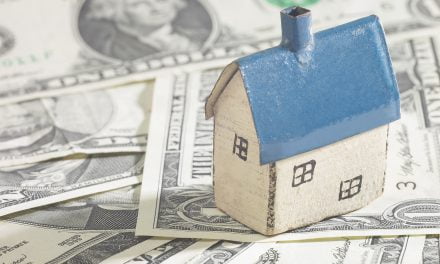This article examines the relationship between a homeowners’ negative equity position and foreclosure.
Conventional wisdom holds that foreclosures are triggered when homeowners owe more on their mortgages than the market value of their homes, a financial condition called negative equity. This condition, now being experienced by a huge proportion of California’s population, is feared by homeowners, lenders and policymakers alike. Unsurprisingly, the number of owners with negative equity has increased dramatically during the current housing market downturn. Consistent with this wisdom, negative equity is often called the primary cause for the rise in foreclosures that accompanies a bust.
In response to the recent increase in negative equity and the corresponding foreclosure frenzy, the government has unleashed a series of policies which attempt to induce lenders to offer loan modification programs in lieu of foreclosure. If negative equity is the problem, loan modifications, preferably in the form of reduced mortgage debt (also known as a cramdown) should be the government’s preferred solution. Yet government efforts to generate loan modifications have been largely unsuccessful, so other conditions must exist.
Lenders generally disregard government incentives to modify loans. Without modifications marginally solvent homeowners with negative equity will always default and go into foreclosure. If lenders do choose to modify loans, they tend to leave the loan balance intact, limiting the modification to a mere reduction of the dollar amount of scheduled payments. Lenders, it seems, have a different perspective on the market than homeowners and most politicians.
That lender perspective is best encapsulated in a 2008 study from the Boston Federal Reserve. The study, entitled “Negative Equity and Foreclosure: Theory and Evidence,” indicates, contrary to popular belief, that negative equity on its own is rarely sufficient to induce foreclosure. By examining historic foreclosure rates in Massachusetts over a 20-year period, the report’s authors discovered that over 90% of homeowners with negative equity continued to pay their mortgages. In fact, the report demonstrates that default almost always remains an unlikely option for homeowners. The homeowner is faced with many economic disincentives that accompany the foreclosure process driving them to hold on to their homes, in spite of the cost.
The Fed’s research leads it to speculate that even when the outstanding balance on a mortgage exceeds the home’s market value it is almost always a more fiscally sound decision for homeowners to continue making payments on their mortgages if they are able. To justify this conclusion, they point to the costs of relocating, the loss of credit, and the emotional distress associated with “failing” to keep their home as combining to keep homeowners in their residences—imprisoned—unless some external factor tips the scale. Homeowners generally do not default and go into foreclosure on their homes unless negative equity is combined with a household income shock (e.g., loss of job, loss of health, death, loan resetting, etc.) that makes the mortgage payment unaffordable.
The Fed’s article then applies this conclusion to lenders and policymakers trying to help mortgage holders avoid foreclosure. If the preponderance of underwater homeowners is not in fact at risk of default due to their inability to pay, then loan modifications that reduce the loan balance or interest rate will be an unnecessary loss for lenders. Why would lenders effectively offer discounts to owners who would never have defaulted in the first place? This logic also applies to the approval of a short sale, since short sale approval involves a discount typically offered to owners who will never default.
Forbearance agreements, which temporarily reduce monthly mortgage payments but do not alter the original terms of the loan, are much better loved by lenders. Unlike other assistance measures, forbearance agreements are economically beneficial only to homeowners at serious risk of foreclosure. Lenders who use forbearance agreements can thus direct their resources where they will be most effective—foreclosing on the insolvent homeowners.
Keep in mind that the Fed’s report was written a year ago. Since then, the economy has taken a nose-dive and handed pink slips to several million workers—over 900,000 already in California alone, and this trend will continue to increase well into 2010. Homeowners in negative equity now have the income shock needed to make their mortgages truly unaffordable. Even those capable of paying their mortgages are now more likely to choose not to, and deliberately default, in reaction to broader economic trends like drastically falling prices, increased information on California’s anti-deficiency laws, and the put-option right to force the lender to take the home without owner liability. Lenders have no control over these conditions, except to play the “moral card,” admonishing homeowners to do good by paying so that lenders can do well.
Lenders continue to prefer forbearances and foreclosure to modifications. However, the last few months have illustrated that forbearance modifications may simply not be enough to save lenders — or homeowners — from the suddenly more frightening specter of negative equity combined with widespread income shock and homeowners’ increased understanding of their options. The government is aware of these facts, and is trying to persuade lenders to offer the necessary loan modifications to avoid foreclosure—cramdowns. Lenders, however, fear that cramdowns would create losses greater than those they are already suffering from foreclosure. As a result, widespread loan modifications will remain unlikely unless lenders are someday forced to offer them by government competition, in the form of loan cramdowns mandated by bankruptcy judges.
Until judgment-day competition exists, lenders will continue to foreclose on nine homeowners for every one loan they modify (or discount in a short sale). Homeowners with negative equity will continue to suffer without assistance until, like rational individuals, they exercise their put option by defaulting on their loan, moving on to a financial future in other shelter without a dead-end loan dragging down both themselves and their wealth.
For whom will they do good?













